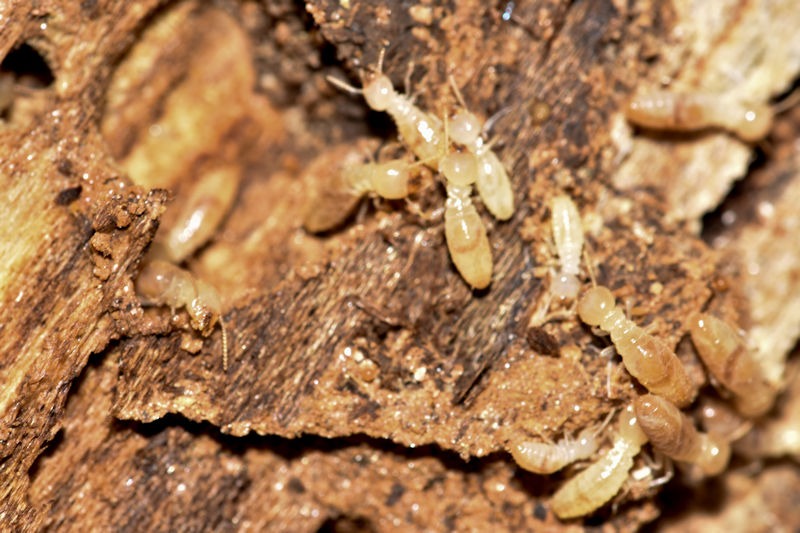Termites are always unwelcome guests. These pests damage close to 600,000 homes in the U.S every year. Also, the United States Department of Agriculture estimates that homeowners spend a total of $1 billion a year on termite extermination and repairs.
It’s obvious that termites pose a serious problem for homeowners, but what can you do about it? From early warning signs to termite damage, we break down everything you need to know about termites.
How to Identify Termites
One of the things you need to know about termites is how to identify them. It’s common to mistake flying ants for flying termites but termites have very distinct features.
Termites have wings that are equal in length and straight antennae. They are also roughly ¼ to ½ an inch long. Their color can vary from white to light brown. Worker termites are ofter lighter and swarming termites appear darker. During mating season, swarmers, or winged termites, are easily spotted.
There are three species of termites: subterranean, Formosan subterranean, and Drywood. These types of termites vary in behavior and geographical region.
Homeowners with a termite infestation will most likely have subterranean termites. Drywood termites are not common in Virginia but some nests have been found in a few locations.
Where Do Termites in Springfield, VA Live?
Subterranean termites thrive in damp soil. They live underground and access wood through termite tunnels called mud tubes. These tunnels are comprised of wood and soil and are found near termite nests and homes.
Once termites get access to wood in your home, they live in the walls and cause damage. They typically live in areas of the home with the most moisture. Some of these areas include the bathroom and basement. Termites can also hide in built-in cabinets, wood paneling, and baseboards.
What are the Signs of Termite Damage?
A common misconception is that termites only damage homes made primarily of wood. However, homes made with other materials may also be affected by termite infestation.
These pests are capable of eating through plaster, metal siding, and other material. They can also traverse through floors, ceilings, and wooden furniture.
One signifier of termite damage is sagging floors and ceilings. In addition, termite damage looks similar to water damage. You will also notice heaps of sawdust, mud tubes, and shed wings of termite swarmers.
Oftentimes termite damage may not become apparent until there is an infestation. Termite infestation leaves an odor similar to mold or mildew.
Notice Termites in Your Home? Call Planet Friendly Pest Control
If you live in Southern Maryland or Northern Virginia and notice signs of termites, don’t panic. It’s best to contact a professional as soon as possible.
Our termite treatment is designed to exterminate termites while reducing the impact on the environment.
Don’t wait until it’s too late, contact us!
NEED HELP?
If you live in Southern Maryland, or Northern Virginia
FIND YOUR SOLUTION HERE
People, Pet & Pollinator Safe! Pest control for people who care.
